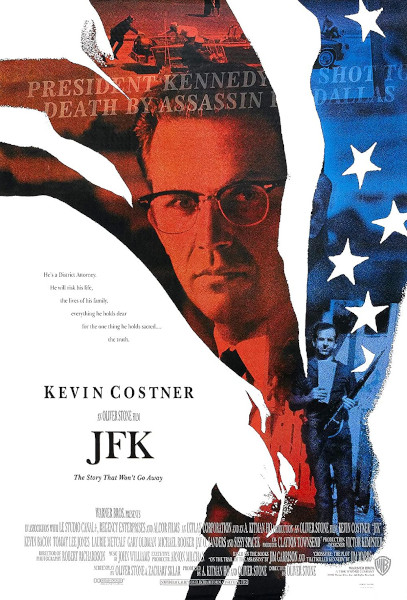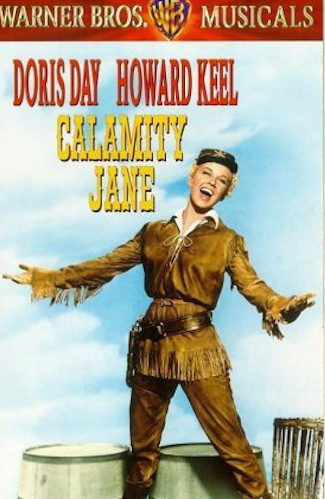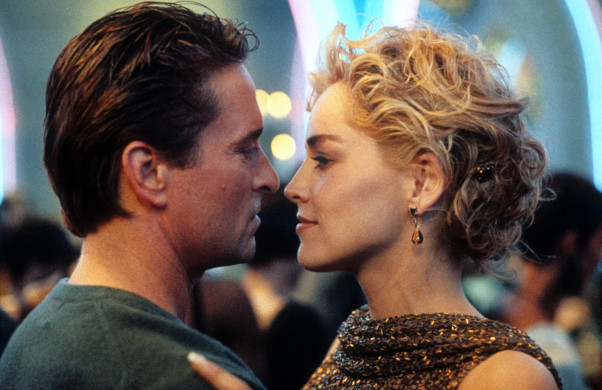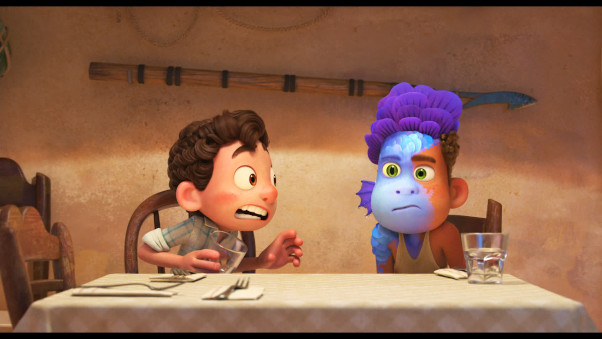Why Queer Audiences Co-Opt Media

Opinion:
Given the scarce portrayals of LGBTQIA+ characters in media, it may be shocking to learn that, in fact, there is no shortage of queer experiences found in film, literature, and oral histories. In yearning to see their stories reflected in the media, queer audiences have been clamoring for representation and, when there isn’t any, they become adept at co-opting narratives that were never meant for them in the first place.
Plagued with portrayals of harmful stereotypes and tropes that paint queer people as deviants, queer audiences have had to stretch their imaginations to see themselves depicted in media channels that have historically been hostile towards and that continue to be obstinate about depicting a more accurate, modern queer world. As a result, in order to find at least a glimpse of our experiences they’ve had to lay claim to the narratives and stories that do exist, even when queer people are purposefully left out of them. This reclamation of narratives may even be survival instinct, given the toxic and dangerous ways in which movies, books, and stories have long depicted queer people.
In film, for example, queer coding has been used pretty much since the emergence of film itself. Queer coding is the indirect way to “identify” a character as queer, which is to say without explicitly referring to them as such. Queer coding itself isn’t necessarily a bad thing, as it can be purposefully used as a sort of a wink to a receptive queer audience in an environment that would normally not allow explicit displays of queerness – like Doris Day dressed in buckskins and singing about her secret love in Calamity Jane.

But even since the times of classical Hollywood, gay coding has also been used to inform the audience that a character was probably an untrustworthy sort. The Maltese Falcon is an early example of the long tradition of coding villains as queers. Joel Cairo, the villain of the famous film, is characterized by his effeminate nature, his flower-scented business card, and the suggestive way he fondles the cane handle of his umbrella. During the Hays Code era, the film wouldn’t have been allowed to depict any explicit homosexuality anyway, as it would have fallen under the category of “sex perversion” at the time, which was strictly prohibited; so instead it only subtly implies Cairo’s queerness.
Meanwhile, when characters were depicted as explicitly queer, they were often up to no good, as in the case in 1980’s Cruising (gay serial killer into leather and chains), the much-lauded films Silence of the Lambs (transgender serial killer who skinned his victims) and Oliver Stone’s JFK (real-life homosexuals Clay Shaw and David Ferrie depicted with very wide dramatic license over their queerness, including a completely salacious orgy scene because these questionable men also had to be… depraved, oversexed homosexuals?). In Basic Instinct, the infamous Catherine Tramell is depicted as bisexual—if not pansexual—merely as a plot point. The lesbians of the film are dispensed with quickly, and Catherine ends up being a villainous murderess.
In The Thin Red Line book, Corporal Geoffrey Fife is depicted as having a sexual, albeit not romantic, relationship with Private Edward Bead, though no such homosexual depiction is made in the movie version. There’s also the toned-down lesbianism of Celie in the film version of The Color Purple, even though in the book, Celie has a sexual awakening because of her intimate relationship with Shug.

But even if in the original Silence of the Lambs book, Thomas Harris at least tried to say that the murderous Buffalo Bill was not a true transgender in the real clinical sense, literature is generally not really better off. Carmilla, a book that predates Dracula, is about a predatory lesbian vampire that prays on innocent women. Pussy Galore of Bond fame was written as a lesbian in Ian Fleming’s original book who gets “cured” of her lesbianism by the suave spy himself. Perhaps we should be grateful that Pussy Galore was straightwashed in the film, then? Recently, the queen of witches and wizards herself, J.K. Rowling, published a new book with a villain who dresses as and pretends to be a woman in order to prey on women.
To be clear, there’s nothing wrong with flawed queer characters, or even evil ones, as long as that villainy and deviance is not tied to their queerness or that queerness is not used as a defining characteristic of evil people. For example, I personally love the fact that Sean Bateman from the The Rules of Attraction is a psychotic bisexual (in the book at least; the film predictably made him heterosexual).
Dorian Gray is a deliciously selfish and vindictive cautionary tale. In P.J. Vernon’s recently released Bath Haus, the protagonist Oliver gets caught up in a dangerous net of lies of his own making because he wanted to get hot and heavy with a man who was not his husband. And pretty much every queer character in an Adam Silvera book gets messy at some point. But these characters are not flawed because they are queer, they are flawed because they are human. Well, except maybe Sean from The Rules of Attraction who is deranged because he’s Patrick Bateman’s, the literal original psycho, brother.
All this is to say that, given the troubled history of the depiction of LGBTQIA+ characters in literature and film, it’s no wonder that we’re still looking through cracks and angles hoping to find a vestige of a queer experience that is not rife with the negative connotations that have traditionally plagued queer characters, in the rare occasions that queer characters are depicted at all or not straightwashed. And so queer audiences have had resort to this co-opting of media, this assimilation of narratives to fit within queer stories and experiences that have shifted and refocused the way some films and literature are consumed.

There is a differentiation here—and similarities, to some extent—between “queer theory” and queer “co-opting” of media. Queer theory began to appear in the early 1990s. Generally attributed to have been developed by Eve Sedgwick and scholar Judith Butler, queer theory emerged as a prism through which scholars can examine literary texts. As a fully developed field of study, queer theory is a complex and ever-evolving network of philosophies and concepts infused with changing understandings of gender and even the meaning of “queer,” from Butler’s own ideas on the performativity of gender from their seminal “Gender Trouble” to more modern repudiations of labels and sexual preferences boxes.
We touch on queer theory because, in a sense, this “prism” through which media is observed and studied as it relates to a queer experience has been around for a very long time—certainly since at least the emergence of mass media, though there are instances of literature and oral histories being viewed as “queer stories” that go back centuries. But more so that seeing through the cracks of half-opened doors where there may have already been crumbs of queer representation, queer audiences are also pros at co-opting stories devoid of clear queer narratives and reshaping them into one that mirrors their experience.
In that sense, this isn’t that same kind of prism through which to study works of art and media because this co-opting is a claim upon these stories. In other words, just as there could be a feminist reading of The Usual Suspects, for example, queer theory would say that there could, too, be a queer reading of that film; but no one is claiming The Usual Suspects as a forgotten queer film gem (yet, anyway).
On the other hand, the ancient Greek poem “The Iliad,” for instance, has basically become queer canon. Scholars have been debating forever whether the relationship between Achilles and Patroclus was romantic in nature. But just ask any homosexual who has seen half a dozen movies or read a few romance books, and there would be no hesitation in proclaiming Achilles and Patroclus a gay power couple. The tale of the fall of Troy is an interesting example because should it be written today, now that we’ve been trained by decades of movie and literature tropes, it would be next to impossible to deny what was going on between Achilles and Patroclus.

This is because we as consumers have been coached by the media to understand and pick up on narrative points and tropes to tell us that a relationship between two characters may be romantic in nature or may turn romantic; think: the long stares and turning away just as he raises his gaze to meet theirs and missing it, the tumbling down a hill and falling on top of each other, the lifetime friends who follow each other wherever the world may take them (even to war like, ahem, Achilles and Patroclus). Because of this, we could not ignore these narrative points and tropes when they are also present in an “Iliad” written in modern times. Decades of movies and books haven’t taught us that you bring down entire cities because you’re sad about your childhood pal dying in some war; but that you rain destruction upon those who bring harm to the one you love like epics such as Gladiator, Braveheart, and John Wick taught us. So, a modern “Iliad” would better give us gay soldiers or it would just be another queer-bating mess, and thus “The Iliad” has rightfully been claimed as a queer tragedy of doomed love.
The story of Mulan, as the folklore goes and of course even before Disney’s animated film secured her place as a queer icon (more on that later), was already questioning ideas about womanhood, loyalty, and the performativity of gender around the tail end of classical antiquity. Even if the legend was perhaps meant to illustrate the value of courage, loyalty, and love of family, Mulan was already reexamining what it means to “behave like a man,” even if subversively so, way before Captain Shang told us to be as swift as a coursing river and have the force of a great typhoon.
Closer to our century, we have Frankenstein. The doctor goes in search of the perfect body parts to make a man. Frankenstein’s Monster comes to life and is then ostracized by the locals, who come for him with literal torches while the Monster pleads for his life, explaining in vain that he poses no harm, mostly just wants to be left alone, and that he didn’t ask to be made and be born a monster. The Monster even gets to give a monologue about his sorrows and he eventually, very dramatically, leaps into the darkness of the ocean and is borne away by the waves.

Even with the daddy issues aside and Frankenstein’s obsession with manly parts, we can see how there can be a queer reading of the Monster’s ostracization at the hands of the villagers for no other reason than he is alive. His mere existence, regardless of his harmless disposition, is an affront to nature that must be eradicated, never mind that the Monster didn’t even want to be here in the first place.
While there is no evidence that Mary Shelly wrote the seminal sci-fi/horror novel as a parable for the queer experience, that doesn’t mean it’s not there. In fact, The Bride of Frankenstein, the sequel to the original film, is widely regarded as a queer allegory. Commonly lauded as the masterpiece of director James Whale, who was queer himself, the film even features two men essentially playing father figures to the creature they create. The gay crumbs were already there from the start; we just had to follow them. Literature after all, like all art and media, is meant to be consumed and is thereby shaped by the audience’s reading of it. Who’s to say, even, that immigrants in the U.S. couldn’t apply their own experiences to Shelly’s story and see it as a tale of survival in the face of adversity, ostracization and all?
And we had to mention Frankenstein because there are so many examples that offer such clear parallels between “monstrosity” and the queer experience that this reclamation of horror for the queer community should not shock anyone. Just as literature is replete with villains who are evil for evil’s sake, it is also full of monsters who are villainized for factors outside of their control. So queer people identifying with monsters is nothing new. Queerness has long been depicted as a facet of monsters and evildoing, so it was perhaps the logical conclusion that queer people would come to identify with the villains after being villainized for so long.
This has led to an empowering claim by queer people over all things monsters. In 2017, the now-beloved Babadook became the unofficial queer icon of the Pride month of June when it was discovered that Netflix had accidentally labeled the film The Babadook as a queer movie. A Nightmare on Elm Street 2: Freddy’s Revenge has become so canonically queer and dubbed the gayest horror film, that I have been to gay bars playing the film on the TVs behind the counter as normally as if they were playing Ru Paul’s Drag Race reruns.

Meanwhile, queer people’s fascination with cryptids is a more modern but easily observed phenomenon, though perhaps also not that entirely shocking. The myth of cryptids like the Flatwood Monster and the Mothman usually emerge from tales of sightings around rural areas and small towns. In places where queer people were oftentimes thought of as the bogeyman, it’s maybe not surprising that they ended up identifying with the local monster of lore.
Then, of course, there is the “beloved” tradition of Disney imbuing its villains with myriad queer characteristics.
Disney is an easy target in many ways because of the sheer amount of media it produces. It has long been accused of brainwashing the youth with some hidden liberal agenda or another. Disney has also been widely criticized for its portrayals of villains, from the well-known fact that Ursula was inspired by the real-life drag icon Divine, to the way its male villains love to saunter and speak in lisped witticisms the way homosexuals have been stereotyped as doing. But beyond these harmful stereotypes, what’s not to like about Disney villains? They have the flair, the dramatics, the smoky eyes, the best songs. Maleficent rained down curses because she wasn’t invited to a brunch -- if that’s not a queer narrative, I don’t know what is.
With some Disney villains, we see more multifaceted characters that live in more gray areas of villainy. Sure, Ursula took Ariel’s voice, but she gave her legs and what do we even know about what King Triton may have done to cross her in the first place? Maybe it wasn’t very nice that Maleficent cursed Aurora, but why wasn’t she invited to the royal christening when all the other fairies were? She even gave the royals a chance to apologize for their disrespect and they blew it, so what is a powerful spurned fairy to do? And there’s also just the irresistible camp of Disney villains. Somewhat similar to the way queer men gravitate towards pop divas because of their larger-than-life theatricality, the camp and grandeur with which these posh Disney villains get up to in their evildoing is wildly appealing.

In addition to identifying with the villains, there’s been a reclamation of Disney heroes, too. This is not to be confused with Disney’s meager attempts at queer representation (see LeFou), and its never-ending queer-bating (too many examples to list, but see The Falcon and the Winter Solider and entire animated film Luca for recent examples). As far back as the height of the Disney renaissance era, queer audiences were co-opting heroes and heroines for themselves.
Mulan has long been considered a queer narrative. More so than the gender-bending antics—a trope that even Shakespeare was using back in his day—the possibility of bisexuality if Captain Shang fell in love with Mulan while she was still disguised as a man, and literal men in drag helping to save all of China, the heroine herself mirrors the experience of queer people. Mulan is trying to find her role as a woman but does not want to be constrained by tradition-dictated woman-specific roles. She even sings to herself in the song “Reflection” about wanting her appearance to manifest what Mulan actually feels like inside, verses that many transgender persons can identify with. Also, it’s entirely possible that Disney knew exactly what it was doing here, because you don’t just get Harvey Fierstein to voice a character who ends up dressing in drag and then claim there’s nothing suspiciously gay going on.
Even vintage Disney films have been given a queer makeover. Peter Pan which, arguably, depicts gender roles as a being split squarely down the middle, may have some queer undertones especially when these gender roles are studied through a loupe. In fact, every single theatrical production of Peter Pan casts a woman to play Peter – an act that goes beyond a casting tradition and perhaps instils the story of the boy who never wants to grow up with more social commentary than it had originally intended. Pinocchio wants to become a “real boy,” and debate has been around for a long time if the tale mirrors facets of the trans experience. Cinderella is a quintessential story of “it gets better,” a rallying motto of the queer community.
More recently, there was the widely supported co-opting of Elsa as a lesbian icon, for example. Petitions to give Elsa a girlfriend in the second Frozen movie gained a lot of traction. Even detractors, who predictably started an opposing campaign to not give Elsa a girlfriend, asserted that the first Frozen movie has been co-opted by liberals for its pro-gay themes. Alas, she didn’t get a girlfriend in the sequel film but, she also didn’t get a boyfriend. So we’ll take what we can and co-opt as necessary.
Similarly, Luca is such a simple and beautiful story about a young boy curious about what lies beyond the surface of the oceans, who is afraid of not belonging, who discovers others who are just like him, and who finds acceptance from others for being who he really is (part monster, in case that was in doubt). The film is about a fish out of water, literally, finding his path. Luca offers such a hopeful depiction of a queer coming-of-age experience, that The New York Times even dubbed the film Calamari by Your Name in reference to the gay romance story Call Me by Your Name.
The film’s director, Enrico Casarosa, was stalwart in explaining that Luca is, in fact, not a queer story because it is only about friendship. In the depiction of the two boys at the center of the film, he clarified, he purposefully made them young enough so that they did not have to worry about girlfriends or boyfriends just yet, and friendship can remain the central theme of the movie.
This is probably one of the biggest reasons why queer audiences like to co-opt stories like these, even when they are explicitly told that there is no queerness anywhere to be seen. Casarosa’s explanation may well be what the filmmakers intended, yet this rationalization makes the incorrect assertion that in order for a story to be queer, it must involve romance, or sex, of contain characters of a certain age.
But there is more to queer people than just their identities, and this erroneous belief that queer stories must somehow and for some reason be “age appropriate” is an excuse that has been overused to exclude queer narratives from media of all kinds. And it’s exactly why we sometimes don’t have to look that hard to find a narrative that reflects our sensibilities. There is something revolutionary in claiming these stories as queer, as part of the queer collective. It’s as if there’s a kind of universality among the infinite experiences that queer people journey through.
Author Bio:
This is an opinion piece by Angelo Franco. Franco is a chief features writer at Highbrow Magazine.
Highbrow Magazine




























































































































































































































































































































